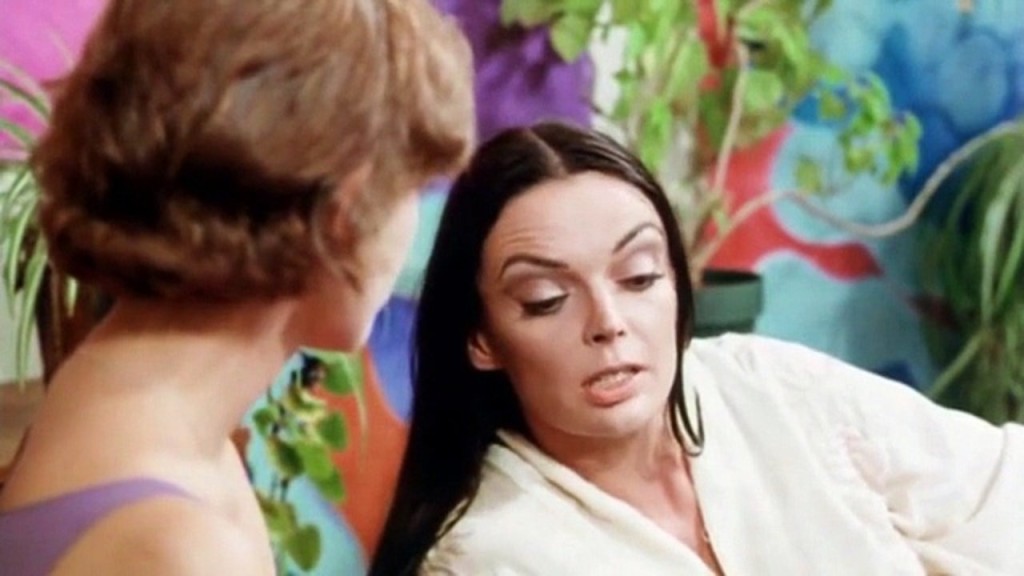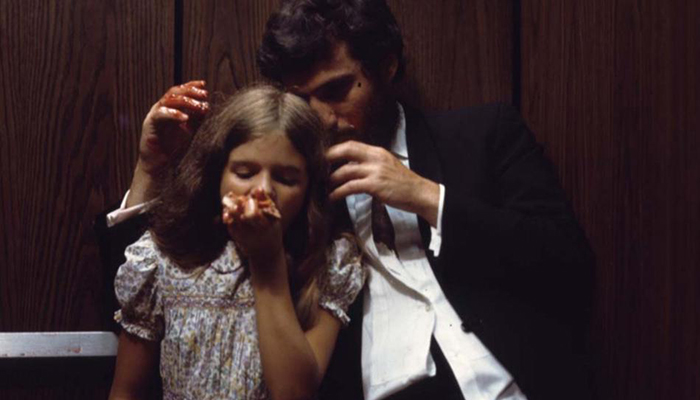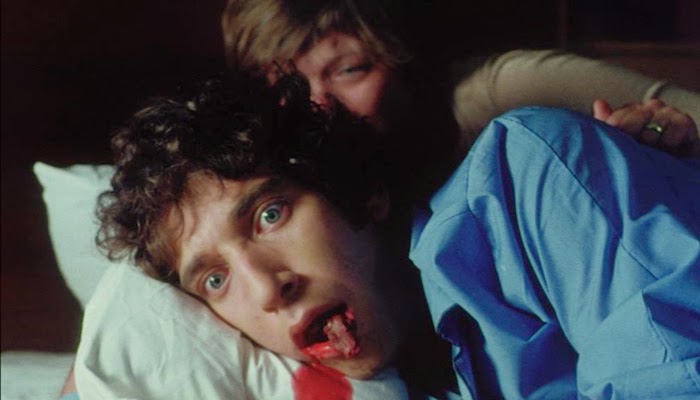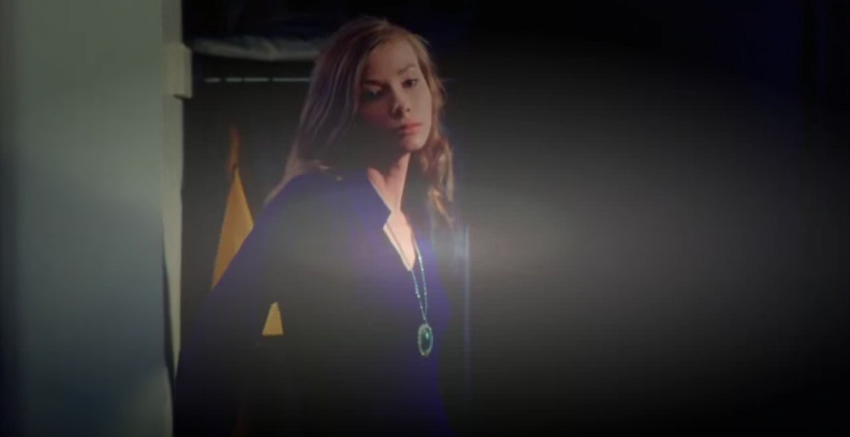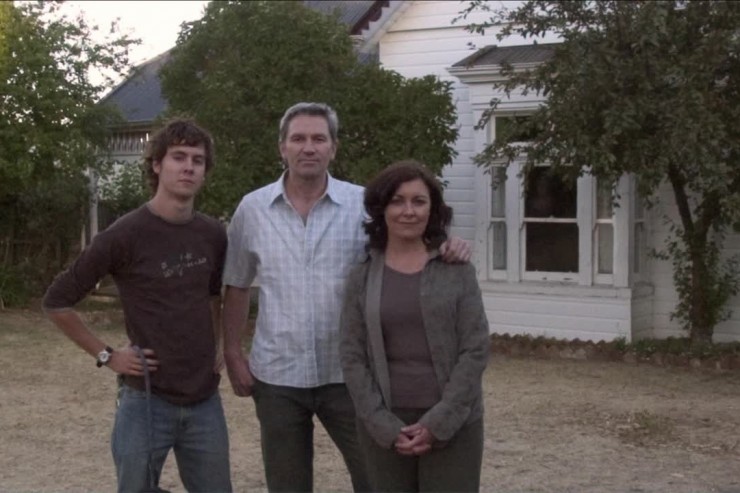
Lake Mungo also serves as the scariest Where’s Waldo? game ever. Find the ghost!
This January, in support of the Toronto Rape Crisis Centre / Multicultural Women Against Rape, friends and family have raised over $1,000, which means I have to watch and write about thirty-one horror movies. I’ll watch (on average) one movie a night, many of them requested by donors, after which I’ll write some things about said movies on this website. Be forewarned that all such write-ups will contain spoilers! Today, we plunge (get it?) into Lake Mungo, directed by indie filmmaker Joel Anderson, who has no other features to his name. Lake Mungo was requested by donor, playwright, and self-described Lake Mungo evangelist, David Demchuk, who I only really knew through Twitter. But David expressed an interest in being part of the Lake Mungo screening, so I invited him, a relative stranger, into my apartment this past evening to watch the movie with me. (Sounds like the premise of a horror movie itself!) I’m happy to report, however, no one wound up dead, David Demchuk was a delightful houseguest (who has a horror book out in 2017!), and his insights have been credited below. Once again, I rented Lake Mungo from my friends at one of the last bastions of video rental in Toronto, Queen Video.
What happens:
The low-key Australian horror film Lake Mungo was first recommended to me by David Demchuk, who’s something of a horror aficionado, but it was also suggested by at least two other donors. Clearly, I thought, there is something to this Lake Mungo movie that has all these horror fans delighted. Demchuk prefaced the screening only by saying he lamented how many horror movies were marketed; that the wrong kind of marketing could really kill (ha!) a movie like Lake Mungo. The other information we should all be aware of before starting is that both Lake Mungo – a dry lake in New South Wales – and the city the Palmers live in are real locations.
The opening credits of Lake Mungo appear over Ken-Burns-style camera pans of old Victorian photographs in which ghosts (or something unexplained) have also been captured. The final shot in the credit sequence is of a white, middle-class Australian family: a dad, mom, and their teenaged son. A title card informs viewers that the documentary we’re about to view concerns tragic events that happened in 2005 in the Victorian town of Ararat. The film proceeds as a documentary, cutting between first-person interviews with characters in the story, home videos, newscasts, and still photos. (As a result, I apologize if and when I mix up my verb tenses below.) In fact, the similarity to a real documentary – right down to the actors’ masterful responses and pauses and the filler scenes of landscapes and night skies – is so effective, you might be inclined to think Lake Mungo really is one.
The documentary opens with a garbled emergency call: June Palmer (Rosie Traynor) requests help, as her sixteen-year-old daughter, Alice (Talia Zucker) has gone missing. The family – June, Russell (David Pledger), and their two teenaged kids – were at the Ararat dam for a swim, when Mathew (Martin Sharpe), Alice’s brother, turned around, and saw his sister was gone. None of the family noticed her slip under the water or run away. But it seems pretty clear that Alice didn’t leave. (She left her towel behind; she would have needed that to dry off, right?) Family friend Georgie Ritter (Tania Lentini) – who looks a bit like Krysten Ritter – recalls the first night Alice went missing, when the Palmers’ friends and family gathered around. June notes how wrong it felt for her mother, Iris (Judith Roberts), to be there, but not Alice: like an inversion. The documentary also introduces Jason Whittle (Marcus Costello), Alice’s boyfriend, and his sister Kim (Chloe Armstrong).
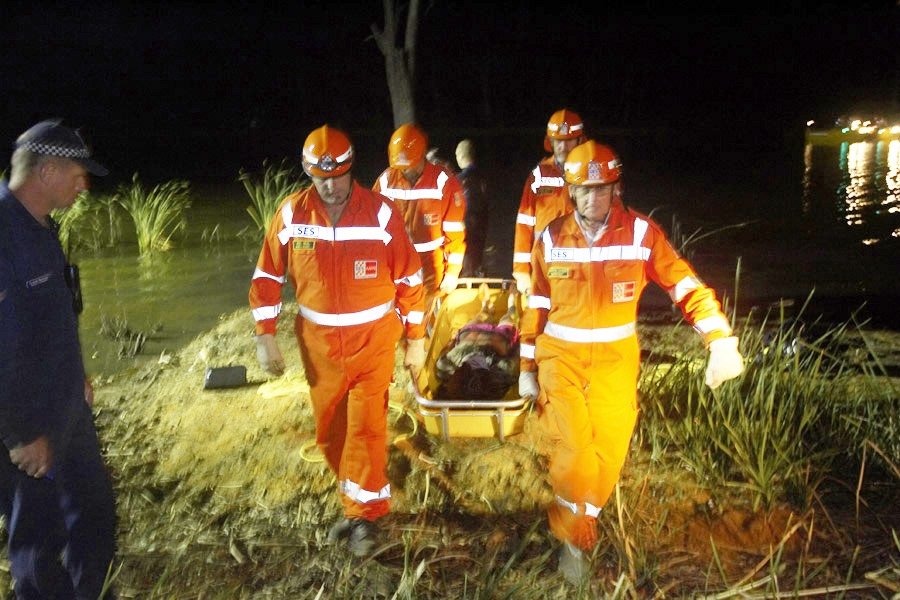
The corpse retrievers are all about night visibility.
On Christmas Eve, police divers find Alice’s body and deliver the grim news to the family. June stays in the car while Russell identifies the body on his own, though he later admits that was a mistake. That June not seeing Alice’s bloated, drowned body (which we see, as well) may prevent his wife form having any closure. (Alice’s corpse looks almost exactly like one of those nightmarish illustrations by Stephen Gammell in the popular Scary Stories to Tell in the Dark anthologies for kids.) Driving back from the dam, the Palmers’ car’s gear malfunctions, and they have to drive back to Ararat in reverse. An autopsy is done on Christmas day and no foul play seems involved. June laments death as “the meanest, dumbest machine there is … and it never stops.” Alice is confirmed dead, and friend Georgie Ritter notes that “as tough as things were, it’s hard to imagine things would get worse.”
Soon, noises are heard in the Palmer house throughout the night. June starts to have nightmares of Alice, dripping wet, standing at the foot of the bed. Terrified of sleep, June goes on long walks at night, eventually escalating to entering strangers’ homes, just to escape her own life and inhabit someone else’s for a short while. Russell throws himself back into his work, his workmate Frederick (James Lawson) notes. But he’s not totally unshaken by Alice’s death: Russell also sees visions of Ally. In one memorable monologue, he talks about seeing Ally in her bedroom, going about her business until she saw him. When the ghost turned to him, it stared, then came at him, shouting, “Get out!” Mathew, who is interested in cameras and film, experiences strange, inexplicable bruises all over his body.
Mathew’s interest in photography uncovers something strange. He’s been taking a photo of the backyard from the same angle every three months. In the photo he takes on April 28, 2006, he can see a grainy image of a figure at the fence: it’s his sister Alice! (The hair on my arms stood on end at this point; it’s still doing so now, just writing about it.) Another photographer, Bob Smeet, while at the dam with his girlfriend, sees a blurry image of a girl in the background of his photograph, too. Is it also Alice? Was Alice still alive?
Russell Palmer had seen his daughter’s body, so he knew she was dead, but June becomes convinced her husband misidentified the body. She’s so certain that Russell begins to doubt his own memory. The family requests Alice’s body to be exhumed, which is done. DNA tests are completed. Sadly, the DNA test confirms the body is that of Alice Palmer. “I really wanted somebody else’s kid to be in that dam,” Russell confesses in a flash of ugly, naked grief. Mathew sets up video cameras in the house at night, a la Paranormal Activity, and captures footage of a figure moving through a doorway. This is when June seeks out the help of radio psychic Ray Kemeny (Steve Jodrell).
Kemeny, who looks kind of like an Australian Rutger Hauer, is a Hungarian-born psychic who changed his name from “Schultz.” He talks about growing up in places where families cover mirrors with sheets when someone dies, and the effect that had on his connection to the dead. (By this measure, all Jewish people have psychic powers, I guess.) Kemeny tapes his consultation sessions, so we see June, under hypnosis, mentally travelling through her house and into Alice’s room, where she sees daughter weeping in a chair at the end of the bed. Kemeny then suggests a séance to the family, and though Russell takes some convincing, they agree.
The séance seems unsuccessful: nothing happens and they call it quits after an hour. But Mathew taped the attempt, and when they review the footage the next day, an image of Alice can be seen in the sliding glass door of the kitchen. (Cue goosebumps.) Ray Kemeny helps Mathew set up more cameras, and rumours spread around Ararat about Kemeny and his effect on the Palmers: some see him as a Rasputin type, preying on the grief of a poor family. But when the new footage is reviewed, Alice can be partially seen seated in the corner of a dark bedroom, or reflected in a hallway mirror. (No joke, some canvasser knocked on my door at this moment in the film – at 9 p.m. (!) – and I was sure it was a ghost come calling.)
Door canvasser dispatched, I returned to David and the movie. We’re next introduced to Cathy and Doug Withers, a couple picnicking near the dam on the same day Bob Smeet took his infamous photo of (allegedly) Alice Palmer. They hear about this supernatural photograph and decide to look through their camcorder recording made at the same day, in the same spot. They find Bob Smeet in the background of one of their shots, and something else – not Alice, but Mathew Palmer wearing Alice’s sweatshirt. When the Palmers realize it was their son, not their dead daughter, caught on tape that day at the dam, they ask if he was involved with any of the other “photographic evidence” of Alice. He admits he faked all of them, using his camera skills. The documentary producer asks Mathew if he thinks his hoax made things worse for his mother, June, and Mathew is forced to admit it did, though it wasn’t his intention. June, for her part, isn’t sure if Mathew knows why he faked the photographs.
Once news of the hoax gets out, the Palmer family becomes the subject of some media scorn. As Russell puts it, things went a bit “pear-shaped.” Family friends note that June and Alice were very much alike, in that they were extremely private people. But because they were both so private, they never got along. June’s mom, Iris, in a passive-aggressive mom move, posits the June was so private, she could never fully give herself to her daughter. (Twist the knife more, Mom!) At this point, bizarrely, Mathew and Ray Kemeny go on a road trip together (?), doing psychic consultations across Victoria. Mathew notes that, like Kemeny’s clients, he also just wanted to get in touch with someone he’d lost. While they’re away for three days, they leave the video cameras on at the Palmer home to record. Even though they aren’t around to doctor the film (or digital video), the cameras still record blurry images of Alice Palmer. Alice’s ghost is, in fact, in the house. It wasn’t just a hoax!
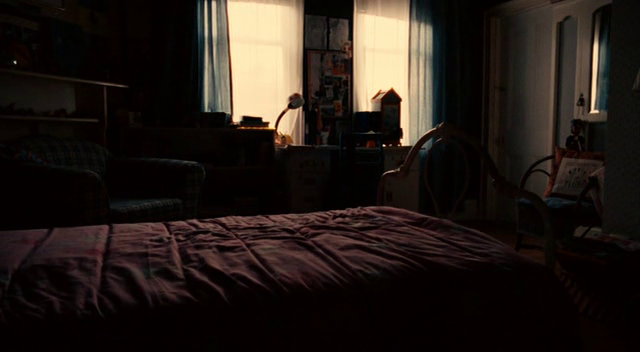
There are more empty rooms in Lake Mungo than in the average Ozu film.
June returns to the faked video that her son Mathew shot. When she studies one video (the first, of a figure walking through a door), she notes there’s another figure reflected in the mirror, a man crouched in Alice’s room. She immediately recognizes it as their neighbour, Brett Toohey (Scott Terrill). But why would Brett Toohey be in her house? June goes through Alice’s room – the area Brett was seen near, in particular – and discovers a video tape that upends her world. Alice used to babysit for Brett and his wife Marissa (Tamara Donnellan). The video shows Alice getting drunk, then having a threesome with the Tooheys. (Remember, Alice was sixteen at the time of her death.)
As family and friends have reminded us the entire film, Alice liked to keep her secrets. But the Tooheys used to throw pool parties for the kids in the neighbourhood; none of Alice’s classmates can fathom what happened on the tape. “I never thought she’d do something like that,” a friend says, placing the responsibility squarely on the dead teenager’s shoulders. Her boyfriend, Jason, is totally baffled. June assumes Alice took the video tape as some kind of insurance, and she imagines the Tooheys were driving themselves mad with the mystery of the tape’s location – especially after Alice died. As it is, the Tooheys leave town six months after Alice died and the police can find no trace of them.
June continues to sort through her daughter’s personal effects and finds a business card from psychic Ray Kemeny (eep!) from July 12, 2005. The Palmers, the documentary producer, and probably the audience is disappointed in Kemeny: if he had a consultation with Alice, why didn’t he tell her parents? His answer is a few unsatisfying mumbles about confidentiality. Kemeny shows the parents his tape of the session with Alice, in which she asks him to interpret her dreams. But the Palmers learn nothing except that they can’t trust Kemeny anymore. They also somewhat blame him for not seeing the warning signs of a girl mostly likely traumatized by her experience with the Tooheys. Alice’s dream diary, at least, radiates with the warning signs of a crippling depression.

“It’s not that we’re mad that you created a hoax about your sister being ghost. We’re just disappointed.”
June then finds several days in the calendar that are marked in big, block letters “LAKE MUNGO.” Lake Mungo is a dry lake bed that’s also the site of a school camp where Alice and some friends visited last August. June remembers Alice going to Lake Mungo over the summer, but only remembers she lost her phone on that trip. At this point, useless boyfriend Jason finally becomes handy and tells the Palmers about his cell phone footage from that weekend at Lake Mungo. A bunch of the kids have phone footage from that trip. On his sister Kim’s phone, the Palmers can see Alice, upset, seeming to bury something in the dirt while her friends revel in the foreground. Kim remarks she knew Alice was a little upset that night, but figured it wasn’t anything big.
The Palmers now have a mission: they drive to Lake Mungo – now nearly two years after the events in the phone footage – to find whatever it was their dead daughter buried. The family scouts out the general location, waits until dark, and starts digging. They find a plastic bag filled with Alice’s necklace, her phone, and her rings. Why was Alice shedding all her valuables at Lake Mungo? They start to review the videos on her phone. The film cuts back to Kemeny’s video, in which Alice says, “I feel like something bad is going to happen to me. Or has already happened.” The film progresses to the scariest sequence in the film.
In Alice’s phone video, the phone moves closer and closer to a white figure in the darkness. As we move closer to the grim spectre, Russell pauses the video on the swollen, beat-up face: it’s the face of Alice’s drowned body, the one he identified at the dam. Nightmare material: achieved! The video unpauses and the dead future Alice leaps at the camera. June is now certain that Alice was convinced she was going to die – that seeing this whatever at Lake Mungo was an omen for her. Russell isn’t convinced she knew she was going to die – ”Sure, she had morbid thoughts. Who doesn’t?” – but he is certain Alice saw and recorded evidence of a ghost. They all are.
When the Palmers return, they find their house calmer. They theorize that Alice just wanted them all to know who she was before she died. The three begin to feel like a family again, instead of a trio of walking dead. Lake Mungo served as some sort of closure. Russell notes that they didn’t help Alice or change anything, they just moved forward with their lives. Soon they reconcile with their friend, the psychic, and they move out of the house.
Finally, we view June’s final session with Ray Kemeny. Under hypnosis, she again enters Alice’s room. The documentary crosscuts this with Alice’s hypnosis session, and she, in her room, sees her mom enter through the doorway. She can see June, but June doesn’t see her. In June’s video, she can’t see anyone. It’s sadder than two Rodans dying. The film returns to the family photograph that it began with. The camera zooms into the window of the house behind them and we see Alice, pressed up against the window. The end credits roll, and “Devil’s-Haircut“-style, the camera noses in to the faked photos and videos to show Alice Palmer really was there the whole time.

I can’t look at this image long enough to write a caption.
Takeaway points:
- David Demchuk had a few very interesting thoughts on Lake Mungo. For one, he sees the movie as kind of a modern-day analogue of Henry James‘s Turn of the Screw, which is an apt comparison. But more interestingly, he said what he found scarier than any ghosts was the depiction of a family going crazy from grief. Lake Mungo is – moreso than other horror movies, which tend to be about grief in general – a horror movie about grief. June starts breaking into houses. Russell focuses on work. Mathew creates a hoax where his sister has become a ghost, though he’s not entirely sure why he’s done it. The family begins to totally unravel more and more, unsure why they are doing so, until they get closer to knowing the dead Alice. Lake Mungo is a chilling and saddening depiction of the strange things sudden grief can make people do. My favourite scene, the family driving backwards from the dam, can be read as visual parallel to the inversion of normal family life. I actually teared up a couple times while writing this reaction to the film. Granted, I haven’t slept much in the past few days, what with full-time work and this horror marathon, but there’s no denying there’s serious emotional power to Lake Mungo.
- One doesn’t need to be a pop-culture expert to draw the parallels between Lake Mungo and Twin Peaks – particularly the twinning of central dead teenagers Laura and Alice Palmer. (They even have the same last name!) Similar to the central dead girl in David Lynch’s cult television series, Alice was one person in front of her family and friends, but kept hidden her sexual relationship with her much older neighbours. (Though I – and the law – would suggest both Palmers were never able to consent, given their age.) Both dead girls live on in some supernatural form. And – as David Demchuk reminded me in our post-movie chat – both serve as some of the realest representations of grief: consider the animalistic howl of Sarah Palmer (Grace Zabriskie) when she learns of Laura’s death.
- Another insight from Mr. Demchuk: there are many ghost stories, but so few ghost stories about meeting your own ghost. And, for me, the real terror of Mungo Lake is not being driven mad by grief, but rather the dread of the possibility that time is not linear. Similar to (spoiler) Donnie Darko, Lake Mungo suggests that the future and present coexist. That there are different planes and there are moments when they might – as when Alice runs into her own hideous corpse in the dead of night – intersect. Even briefly. How do you continue living in a world in which that could happen?
- Lake Mungo is interesting for many reasons – I think we’ve demonstrated that pretty thoroughly. But it’s also interesting because it’s a ghost movie that’s not about revenge or justice. In most ghost stories, the ghost wants its killer brought to get his comeuppance, or something. In Lake Mungo, it would seem that the dead Alice just wants to be known more fully. To reveal herself just a bit more to her parents. Which brings me to my next point …
- Lake Mungo is all about restraint. And I’m not just talking about the tense, low-key performances. The end lesson (of sorts) is that Alice returned as a ghost to reveal something about herself to her family. Throughout the documentary, family and friends discuss how private both June and Alice are (or were). Likewise, there are almost no characters who don’t, at some point, say something like, “He seemed troubled, but it wasn’t my place to say anything,” or “I didn’t think anything of it.” Lake Mungo is a world where no one talks about themselves or shares their thoughts. Everyone is closed off from one another. Their feelings are like a dried lake bed. (Eh? Like it?) And if Lake Mungo asks viewers anything, it’s to not keep secrets and things we feel are shameful feelings to ourselves, as they’ll only cause torment. (How’s that for a tie-in to Bell Let’s Talk Day?)
Truly terrifying or truly terrible?: This movie haunted me more than any of the other horror films I’ve watched so far this January. Just writing about it gave me chills. The film exploits the spookiness of grainy images that may or may not include a hidden something supernatural. It’s like a movie full of Bigfoot videos. Or a spooky Where’s Waldo? Lake Mungo makes Paranormal Activity look like an episode of Goosebumps. And not even a very scary one. I will be forever spooked by that figure in the dark Alice finds at Lake Mungo. As it is, I’m irrationally worried about having an image of it on my computer desktop.

Horror film character or extreme sports show host?
Best outfit: Straight-up Jason Whittle, ladies and gentleman. Tell me he isn’t a Billabong model and spokesperson.
Best line: “He was a pleasant sort of bloke … nothing ooky-spooky.” – Russell Palmer, describing his meeting with psychic Ray Kemeny
Best kill: Only one person dies in Lake Mungo – Alice Palmer – and it happens off-screen. The drowned body the police divers find is unpleasantly realistic, though.
Unexpected cameo: The actors in Lake Mungo were all chosen – I assume – because they hadn’t been in anything high-profile before, to maintain the air of documentary realism. That’s not to say the actors aren’t accomplished. Really, Lake Mungo features some of the better acting I’ve seen in a horror film.
Unexpected lesson(s) learned: Water is not a requirement for calling something a ‘lake’ in Australia. It would be called Grand Lake if it were located in Queensland instead of Arizona.
Most suitable band name derived from the movie: Schultz Kemeny
Next up: Spring (2014).



